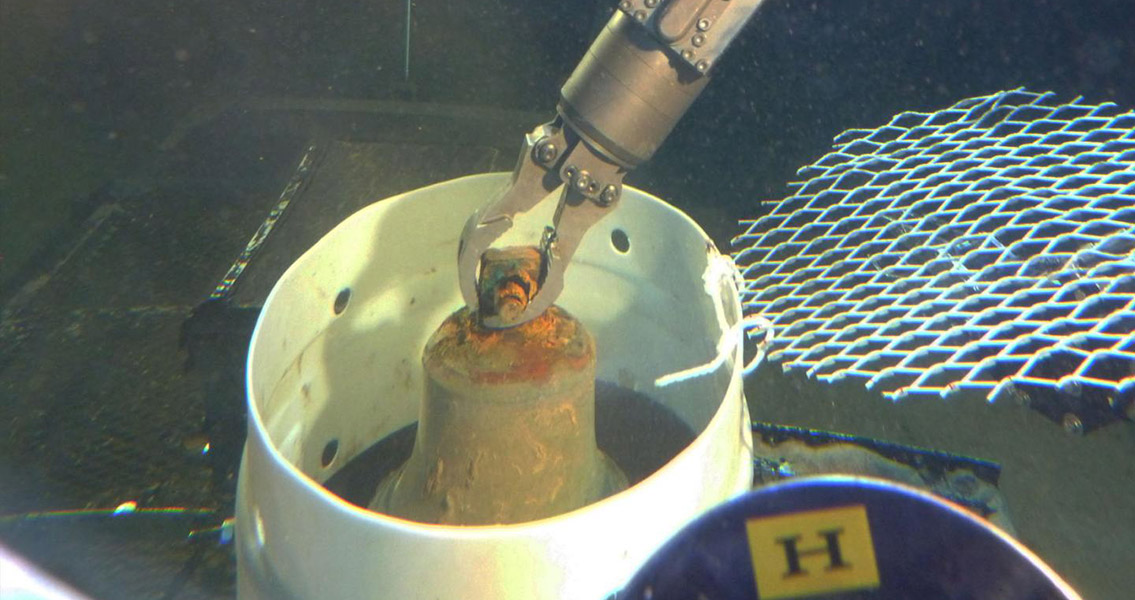<![CDATA[A bronze bell from an Imperial Japanese submarine, captured and intentionally sunk in 1946, has been recovered in a test dive undertaken by the Hawaii Undersea Research Laboratory (HURL). The I-400, a massive Sen-Toku class sub, was an impressive 400 feet long when it fought against US forces in the Pacific Theater. The submersible was the largest ever built until the 1960s, when nuclear power enabled the construction of even larger submarines. Today, the Department of the Navy oversees the site under the auspices of the Sunken Military Craft Act. The I-400, along with the four other Japanese subs that were captured during the conflict, was intentionally sunk off the coast of Oahu in order to prevent the Soviet Union from inspecting them. HURL has been hard at work attempting to locate historic wreck sites since its inception in 1992. In addition to the other work it’s done on behalf of the maritime heritage research efforts of the National Oceanic and Atmospheric Administration (NOAA), it has pinpointed the resting place of four of the five WWII-era Japanese subs. The recovery of the I-400’s bell was spearheaded by HURL’s chief sub pilot and operations director, Terry Kerby. His colleagues Max Cremer, Chris Kelley, and Scott Reed rounded out the team of researchers who used HURL’s manned submersibles, the Pisces IV and the Pisces V, in order to work collaboratively and retrieve the artifact. Personnel from the USS Bowfin Submarine Museum, the Naval History and Heritage Command, California State University-Chico (CSU-C), and the School of Ocean and Earth Science and Technology at the University of Hawaii all collaborated in the recovery efforts. Kerby remarked in a press release that the day of the dive was an exciting one, with CSU-C archaeologist Dr. Georgia Fox receiving the necessary permits for the operation from the Naval History and Heritage Command. With only a single opportunity to spot and recover the bell, it was essential that the dive went off without a hitch. NOAA’s Pacific Islands maritime heritage coordinator, Dr. Hans Van Tillburg, was also quoted in the press release, remarking that the wreck of the I-400 – and other sites like it – are strong reminders of a very different time, both through the lens of the innovations and events of the war and through charting the path to reconciliation from animosity. The Pacific region was completely re-shaped by the conflict which also transformed the combatants irrevocably, the scientist added. As for the fate of the I-400’s bell, Dr. Fox has designed a plan for its careful conservation. First, it will be subjected to a stabilization process for the next twelve months. At that point, it will be moved to the USS Bowfin Submarine Museum where it will be placed on display alongside other artifacts from the Imperial Japanese sub. The museum’s executive director, Jerry Hofwolt, said that displaying the bell in this manner would provide more than three hundred thousand annual visitors the opportunity to access this piece of Pacific Region history. Image courtesy of Hawai'i Undersea Research Laboratory, University of Hawai'i ]]>
Researchers Recover Bronze Bell from Wrecked Japanese Sub
